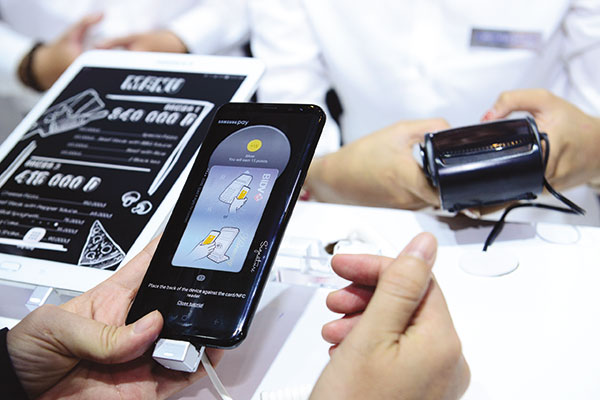Local banks learn a trick from fintech with QR pay
 |
| Ahead of the market entry of major mobile payment providers like AliPay, local banks are instituting QR code pay |
Late last month, privately-held Tien Phong Commercial Joint Stock Bank (TPBank) officially launched a new payment application and money transfer system using quick response (QR) codes on mobile phones, called TPBank QuickPay.
TPBank QuickPay enables users to make payments or transfer money easily and quickly through the use of QR codes.
For payments, users simply open the application, sign in, scan the QR code, and scan their fingerprint or enter a personal password to confirm the payment.
Early this year, state-owned VietinBank deployed QR code payments to benefit its customers on the VietinBank iPay Mobile App, dedicated to smart devices running on iOS, Android, and Windows phones.
Several other banks – Vietcombank, VPBank, ACB, Sacombank, OCB, HDBank, and Maritime Bank – have also made deals with the local fintech firm Moca to expedite the creation of similar payment systems.
According to banking experts, the recent move toward digitalised payments is not only an effort to catch up with the contemporary contactless payment trend, but also an anticipatory defence tactic ahead of the Vietnam entrance of AliPay – the world’s largest mobile payment platform, founded by Alibaba’s Jack Ma.
Ma, who was ranked second on Fortune’s 2017 “The World’s Greatest Leaders” list, is expected to attend the Vietnam E-Payment Forum 2017 in Hanoi this week.
Though the news has yet to be confirmed by the State Bank of Vietnam (SBV), it was rumoured that both AliPay and WeChat Pay (the second largest mobile payment service in China behind AliPay) are intent on entering the Vietnamese market.
If this happens, AliPay might see booming development in Vietnam, capitalising on the crowded user community of Lazada, Asia’s leading e-commerce platform. In 2016, Lazada was bought out by the Alibaba Group, a conglomerate of internet-based businesses and the parent company of AliPay.
In this context, local banks are remaining optimistic, saying that new players in the game will bring about profound changes to consumer habits, and from there pass on opportunities to all stakeholders, including banks and fintech firms.
According to TPBank general director Nguyen Hung, unlike scanning barcodes on point-of-sale (POS) systems, QR codes are very simple to use. They can be applicable for daily activities, helping to save on expenses and make transactions more efficient.
A market survey by Visa released in late 2016 revealed that more than 60 per cent of Vietnamese respondents said they preferred e-payments over traditional payment methods.
Meanwhile, in a recent media talk, Arn Vogels, country manager for Indochina at MasterCard, said that according to the company’s recent survey, 60 per cent of young Vietnamese users would be happy to adopt QR code payment systems.
The demand for these payment methods will increase once the technology is widely applied, covering both invoice payments and cash-on-delivery payments.
According to Pham Tien Dung, head of the SBV’s Payment Department, following the government’s non-cash payment development plan, in September 2017, the State Bank governor enacted a plan on POS system development for small merchants, which also mentions QR code payments.
Last month, the SBV agreed to found the QR Code Sub-Committee.
What the stars mean:
★ Poor ★ ★ Promising ★★★ Good ★★★★ Very good ★★★★★ Exceptional
Latest News
More News
- Long-term capital seen as key hurdle to green growth (December 16, 2025 | 08:00)
- Gold prices swing amid tax debate and import uncertainty (December 15, 2025 | 18:04)
- Agribank frames bank credit as catalyst for green growth (December 15, 2025 | 17:59)
- Vietnam’s green transition demands collective financial action (December 15, 2025 | 12:00)
- VIR workshop highlights capital and policy for sustainable development (December 15, 2025 | 11:00)
- Promoting digital assets initiative in Vietnam (December 13, 2025 | 09:30)
- Experts flag gaps as national financial strategy under review (December 12, 2025 | 15:13)
- Global gold exchange models offer roadmap for Vietnamese market (December 12, 2025 | 11:58)
- Five million household businesses to adopt self-declared tax system (December 11, 2025 | 18:13)
- Vietnam establishes management board for crypto asset trading market (December 11, 2025 | 18:11)


















 Mobile Version
Mobile Version